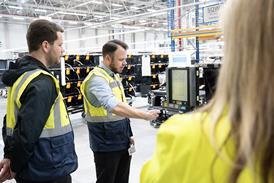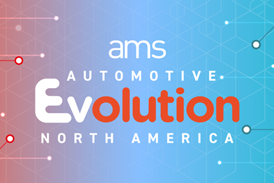At its 2021 virtual open house Dürr showcased technologies for a modular process paintshop configuration. The focus was on solutions that will replace the previous line concept with a configuration based around flexible, connected process modules that can be scaled to meet new requirements

Dürr’s concept presents a range of new products to increase efficiency and profitability in manufacturing and reduce resources for bot high-volume manufacturers and small electric car start-ups.
“What manufacturers need most these days from the painting process is flexibility, cost efficiency, and sustainability. We answer this need with our concept of the paint shop of the future, which overcomes the limitations of the inflexible production line. Instead, the 120 or so individual operations are executed in scalable modules or small sections, in parallel and timed precisely to the needs of the individual body,” explains Jochen Weyrauch, CEO of Dürr.
Based on its new products Dürr’s variable configuration operates from pre-treatment to seam sealing to paint application. The company says this configuration makes it possible to extend capacities and channel different vehicle types through the painting process. Ideally, even individual items can be handled while production is underway.

Intelligent flexibility along the entire process chain
Individual stations are custom equipped using the automated guided vehicle EcoProFleet, which the company says is the first AGV developed specifically for paint shops. In combination with a high-bay storage, the AGV lays the foundation for intelligent material flow control along the whole process. The DXQcontrol software controls each AGV with a high degree of intelligence so that all modules are always efficiently utilised, right from the pre-treatment stage.
The new modular system design of EcoProWet PT is based on standardised chambers instead of immersion tanks arranged one after another. This is not only more flexible, but also saves space. Dürr says it has further automated the subsequent seam sealing stage with the new EcoSealJet Pro applicator and the DXQ software powered by artificial intelligence (AI). The company says this applicator largely does away with the need for manual application, even in hard-to-reach places. This saves time and material and ensures precise application and consistent quality.

For the actual painting process, the box configuration combines the application of the primer and base coat layers – the interior application and the two exterior applications – in just one spray booth. This means that two of the three usual conveying operations are eliminated in EcoProBooth. In addition, it can be used as a standard spray booth with the same robot equipment for both base coat and clear coat. It can handle everything from small cars to pick-ups.
The overspray-free EcoPaintJet Pro painting system now applies even two-component paints (2C) automatically, in addition to two-tone lines for car roofs, colour changes, vertical surfaces, and decorative paint applications. The latest atomiser generation, EcoBell4, delivers shorter colour change times and high-quality automated atomiser cleaning, so that more units can be painted in the same time. A major advantage is the low paint and solvent consumption, which helps to make production more sustainable by reducing VOC emissions, and the integrated RFID technology, designed to maximise the lifetime of the components and increase the first run rate.

Artificial intelligence for increased quality and availability
The software products from Dürr’s DXQ family ensure the individual processes interact smoothly in the modular concept, transforming the box-based painting system into a smart factory. A key tool in this is DXQplant.analytics, which uses AI algorithms and machine learning modules to collect and analyse sensor data, messages, and information. This helps the quality managers identify correlations early on, so that errors can be avoided, and the first run rate increased. A feedback feature constantly provides the algorithm with information, so that predictions about the need for maintenance (predictive maintenance) or quality status (quality prediction) can become more and more precise.
Find out more here






































No comments yet